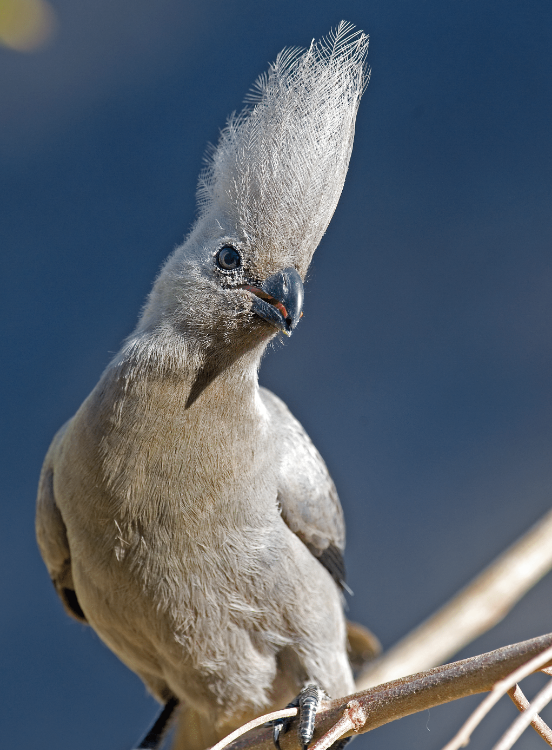Bird’s-eye view – Black-faced Babbler
December 5, 2012Bird’s-eye view – Redbilled quelea
December 5, 2012By Pompie Burger
Rüppell’s Korhaan, Eupodotis rueppellii
Roberts No 236
Rüppell’s Korhaan is one of Namibia’s 13 endemic birds found in the so-called endemic zone in western areas of the country. They occur in the western section of this zone, with only the Damara Tern occurring further west than Rüppell’s Korhaan along the coast.
Driving from the coast inland, you will run into them on the gravel plains just before you reach the mountainous pro-Namib area. Their most southern distribution is in the Maltahöhe surroundings, from where they occur northwards into southern Angola.
The most likely places to find them are at Mirabib, Bloedkoppie and Ganab in the Namib-Naukluft Park, in the Spitzkoppe surroundings, and in the NamibRand Nature Reserve.
Their distribution is basically a northern extension of the very much look-a-like Karoo Korhaan (Eupodotis vigorsii), which occurs from around the Aus area further south. Rüppell’s differs in appearance from the Karoo version in that it has a long, black neckline and white facial markings, compared to the much duller and more uniform Karoo Korhaan so typical of South Africa’s Nama Karoo.
Rüppell’s Korhaans are sedentary and uncommon. They almost invariably occur in pairs, sometimes more when there are offspring. They feed mainly on insects, small reptiles and plant material.
They have a rather unmusical, frog-like duet call, heard mostly when threatened.
Although they are quite good flyers, they usually take to flight only as a last resort when threatened. When raising a chick, they are very protective and will typically walk away from the chick to draw the attention to themselves, even putting themselves in danger in the process.
Their nest is a very basic, shallow scrape among the gravel. Because they do not have a hind toe, they cannot sit in a tree or on a branch. With the number of trees in the pro-Namib area, they probably don’t need to sit in a tree anyway!
Wihelm Peter Eduard Simon Rüppell, a German zoologist who did extensive work in Africa in the mid-1800s, has two of Namibia’s endemics named after him, the korhaan featured above and Rüppell’s Parrot.
About the author:
Based in Windhoek, Pompie Burger is an orthopaedic surgeon whose part-time passion is photography, in particular wildlife, and specifically birds. This regularly takes him to the most remote corners of the country, resulting in riveting images and articles.
Pompie is the author and photographer of the coffee table book Birds of Namibia, which was published in 2008. The book contains articles and photographs which attest to the insight and knowledge of an accomplished observer.
Read more of his articles in our Birding Section.
This article appeared in the Oct/ Nov 2011 edition of Travel News Namibia.


